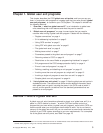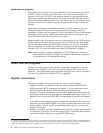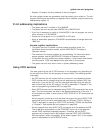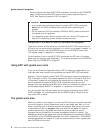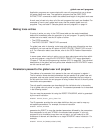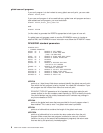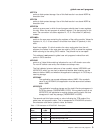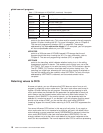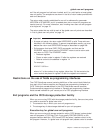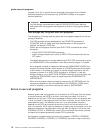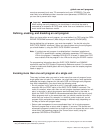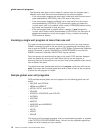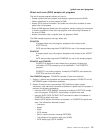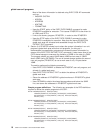
UEPTCA
points to fetch-protect storage. Use of this field results in an abend ASRD at
execution time.
UEPCSA
points to fetch-protect storage. Use of this field results in an abend ASRD at
execution time.
UEPEPSA
points to a save area in which the exit program should store its own registers
on entry. When the exit program is entered, register 13 is also pointing to this
area. The convention is to save registers 14, 15, 0–12 at offset 12 (decimal)
onward.
UEPHMSA
points to the save area containing the registers of the calling module. Values for
registers 14, 15, 0–13 are stored in this order from offset 12 (decimal) in this
area.
Apart from register 15, which contains the return code value from the exit
program, the values in this save area are used by CICS to reload the registers
when returning to the calling CICS module. They should not be corrupted.
This address is not passed to global user exit programs invoked from exit
points in CICS domains.
UEPGIND
points to a 3-byte field containing indicators for use in AP domain user exits.
For non-AP domain user exits, the indicators are always zero.
The first indicator byte can take one of two symbolic values, UEPGANY and
UEPGCICS, which you can test to determine whether data locations can be
above or below 16MB, and whether the application’s storage is in CICS-key or
user-key storage:
UEPGANY
The application can accept addresses above 16MB. If the symbolic
value is not UEPGANY, the application must be returned an address
below 16MB.
UEPGCICS
The application’s working storage and the task’s life-time storage are in
CICS-key storage (TASKDATAKEY=CICS). If the symbolic value is not
UEPGCICS, the application’s working storage and the task’s life-time
storage are in user-key storage (TASKDATAKEY=USER).
The second and third bytes contain a value indicating the TCB mode of the
global user exit program’s caller. This is represented in DFHUEPAR as both a
two-character code and a symbolic value, as follows:
Table 1. TCB indicators in DFHUEPAR. Description
Symbolic
value
2-byte
code
Description
UEPTQR QR The quasi-reentrant mode TCB
UEPTCO CO The concurrent mode TCB
UEPTFO FO The file-owning mode TCB
UEPTRO RO The resource-owning mode TCB
global user exit programs
Chapter 1. Global user exit programs 9
|
|
|
|
|
|
|
|
|
|
|
|
|
|
|
|
|
|
|
|
|
|
|
|
|
|
|||
|||
|||
|||





